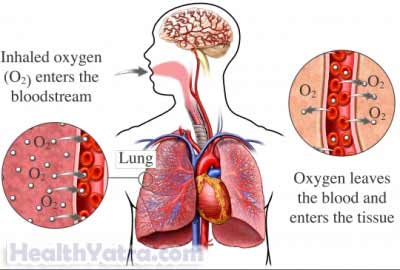Definition
Oxygen therapy is the delivery of extra oxygen to the lungs. It is done to increase the level of available oxygen in your body.

Reasons for Procedure
Oxygen therapy is needed when you cannot get enough oxygen into your body from breathing air normally. It is most often needed because of a health condition or injury. Some common reasons that people need oxygen therapy include:
- Emphysema
- Chronic Bronchitis
- Sarcoidosis
- Other long term lung conditions
Possible Complications
Oxygen therapy is very safe, but there is a risk of explosion. It is important to keep the oxygen supply away from open flames. Also, you should not smoke. No one else should smoke around you while you are having oxygen therapy.
What to Expect
Prior to Procedure
There are specific requirements that must be met before oxygen can be prescribed. Your doctor may need to check your blood oxygen levels with a pulse oximeter.
A doctor will write a prescription for oxygen as needed. The prescription will include how much oxygen is needed, how the oxygen will be given, and when to use it.
Description of the Procedure
Oxygen therapy is most commonly given with a nasal cannula or a face mask. A nasal cannula is a tube that is put into your nostrils. If you have a stoma, oxygen can also be given through a tube directly to the stoma.
Oxygen systems are available in three forms:
- Concentrators—devices that plug into an electrical outlet and pull oxygen from the air.
- Compressed gas systems—available in a variety of portable sizes in steel or aluminum tanks
- Liquid systems—include both a large, stationary component and a smaller, portable component to carry oxygen
How Long Will It Take?
The length of time for which oxygen therapy is to be given depends on your lung function. It can last from a few hours a day to 24 hours a day.
Be sure to follow your doctor’s instructions .
Will It Hurt?
The procedure is painless.
Call Your Doctor
After arriving home, contact your doctor if any of the following occurs:
- Cough, trouble breathing, or chest pain
- Gray/blue tint around eyes, lips, and gums
- Trouble sleeping
- Loss of appetite
In case of emergency Call.
